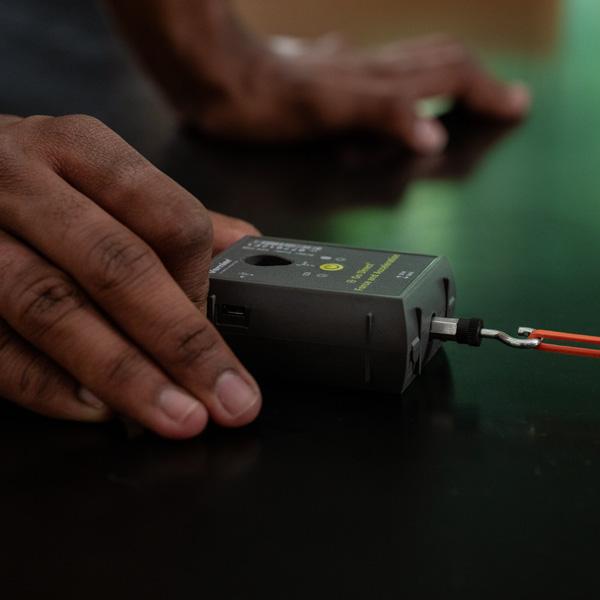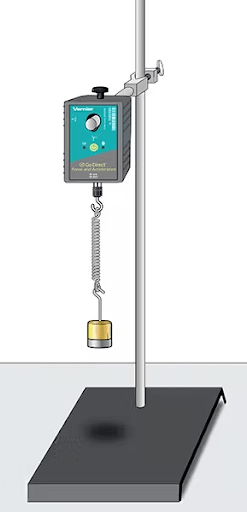
Sharing ideas and inspiration for engagement, inclusion, and excellence in STEM

From everyday activities like opening a door or riding a bike to more complex applications like designing safer cars or propelling rockets into space, force impacts countless aspects of our daily lives. Yet, for many students, force remains an abstract concept—there is nothing for them to “see” or “touch.”
That’s where the Go Direct® Force and Acceleration Sensor comes in.
Combining a 3-axis accelerometer with a stable and accurate force sensor, this device allows students to measure forces from ±0.1 N up to ±50 N as they push, pull, roll, or launch objects. Importantly, it lets them collect real-time data during dynamic, hands-on investigations, giving a tangible way to explore the effects of force and acceleration in real-world contexts.
Ready to explore force and acceleration with your students? Here are three classroom-tested investigations to get you started.
What a Drag!
Experiment #29 from Elementary Science with Vernier
Level: Elementary

Do your students ever wonder why they have to wear tennis shoes in gym class? In this simple experiment, they’ll discover it’s all about friction as they test how different shoes slide across a surface and observe how texture affects motion. Using the Go Direct Force and Acceleration Sensor, students measure the force needed to pull each shoe and learn that smoother soles create less friction, while rougher or stickier ones resist movement.
Encourage students to discuss their data, make predictions, and test shoes on a variety of surfaces. This will help them better understand how forces influence motion and show how friction plays a role in everyday life, like choosing the right pair of shoes to wear in different settings.
The activity can also easily be adapted for middle or high school classes, allowing students to explore scientific concepts such as static and kinetic friction in more depth.
Objectives
- Carry out a data-collection experiment.
- Make observations and predictions about shoes.
- Measure the force needed to pull different shoes across a surface.
- Analyze and interpret data.
Kinematics and Dynamics of Simple Harmonic Motion
Experiment #16 from Advanced Physics with Vernier — Mechanics
Level: High School and College
From the back-and-forth motion that pistons make in a car engine to the vibration of strings on a guitar, there are examples of simple harmonic motion (SHM) in action all around us.
In this experiment, students explore SHM—from both kinematic and dynamic perspectives—by pulling and releasing a weighted spring attached to the Go Direct Force and Acceleration Sensor. Students observe and analyze how the spring provides a restoring force that causes the object to oscillate as they collect a variety of data points.
To extend the investigation, test out different weights or springs, or have students introduce small damping forces, like a piece of paper, to show how friction or drag affects oscillations over time.
From the back-and-forth motion that pistons make in a car engine to the vibration of strings on a guitar, there are examples of simple harmonic motion (SHM) in action all around us.
In this experiment, students explore SHM—from both kinematic and dynamic perspectives—by pulling and releasing a weighted spring attached to the Go Direct Force and Acceleration Sensor. Students observe and analyze how the spring provides a restoring force that causes the object to oscillate as they collect a variety of data points.

To extend the investigation, test out different weights or springs, or have students introduce small damping forces, like a piece of paper, to show how friction or drag affects oscillations over time.
Objectives
- Carry out a data-collection experiment.
- Collect position vs. time data as a weight, hanging from a spring, is set in SHM.
- Determine the best-fit equation for the position vs. time graph of an object undergoing SHM.
- Define the terms amplitude, offset, phase shift, period, and angular frequency in the context of SHM.
- Predict characteristics of the corresponding velocity vs. time and acceleration vs. time graphs, produce these graphs and determine best-fit equations for them.
- Relate the net force and acceleration for a system undergoing SHM.
- Analyze and interpret data.
Centripetal Accelerations with a Turntable
Experiment #20 from Physics with Vernier
Level: High School and College

To switch it up a bit, this hands-on investigation teaches students about centripetal acceleration using the Go Direct Force and Acceleration Sensor’s 3-axis accelerometer. Students attach the sensor to a turntable to collect acceleration data as they determine the relationship between centripetal acceleration, angular velocity, and the radius of the circular path. This helps students understand why objects in circular motion—from merry-go-rounds to footballs thrown in a spiral—behave the way they do.
As a fun bonus, students can also use the sensor’s built-in gyroscope to verify the turntable’s advertised speed.
Objectives
- Carry out a data-collection experiment.
- Measure centripetal acceleration on a record turntable.
- Determine the relationship between centripetal acceleration, radius, and angular velocity.
- Determine the direction of centripetal acceleration.
- Analyze and interpret data.
Looking for more inspiration?
Watch as Fran Poodry, our Director of Physics, investigates a collision by attaching the Go Direct Force and Acceleration Sensor to a cart and measures rotation by placing the sensor on a turntable as detailed in the investigation above.
And, check out the ‘Experiments’ tab on the Go Direct Force and Acceleration Sensor landing page for 70 hands-on activities to investigate Newton’s third law, measure frictional forces, analyze accelerations, and much more.
How are you using the Go Direct Force and Acceleration Sensor in your STEM classroom? Let us know what you’ve done by sharing with us on social! Questions? Reach out to support@vernier.com, call 888-837-6437, or drop us a line in the live chat.
Share this Article

Sign up for our newsletter
Stay in the loop! Beyond Measure delivers monthly updates on the latest news, ideas, and STEM resources from Vernier.






